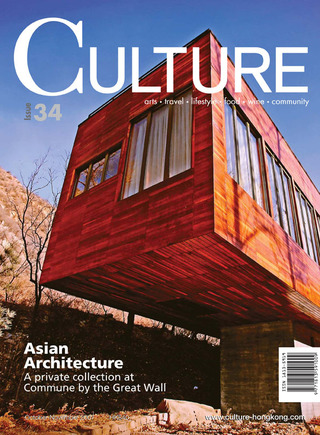
As editor and contributor to up-market, glossy, CULTURE Magazine for the past 10 years, I've written articles on food, wine, and travel from Shanghai to Sydney and Morocco to Manhattan.
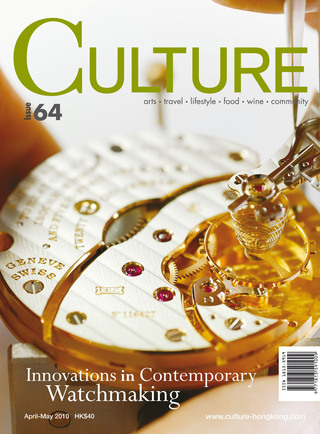

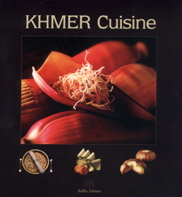
It has been said that a country’s heart and soul can be found in its kitchen. While this sentiment certainly rings true in regard to Cambodian cooking in general, Khmer Cuisine in particular is quite a different kettle of fish.
Distinct in style and presentation from the food you might find on your plate in a typical home (or at any of the ubiquitous street stalls or local cafés), yet utilizing a similar shopping list of ingredients, you can easily see and taste why the complex time-consuming preparations of Khmer Cuisine were traditionally reserved for the exclusive mouths and tummies of royalty alone.
As Cambodia endured endless upheavals and cataclysmic events over the centuries, the country’s culinary arts understandably took a back seat to the art of survival. It’s helpful to get an overview of the country’s sociological and historical past to better understand their gastronomy.
It is believed that as far back as the first century, the kingdom of Funan flourished. Founded by Indian rulers and established in the Mekong Delta, it was the predecessor of the vast Khmer empire. But exactly what transpired in the four or five subsequent centuries has been gathered from fragments found.
Tinged with myth and steeped in legend, the kingdom of Khmer was a mighty power of great regard. From the 9th till the l4th century, a string of god-kings was in control, who built soaring monuments to themselves fashioned after both Hindu and Buddhist teachings. The remains of these fabulous temples - their existence only made known to the public by the French explorer, Henri Mouhot, as recently as the mid-l9th century - are considered a true wonder of the world, especially the famed and well-preserved Angkor Wat, and have become the country’s greatest claim to fame. This truly amazing legacy draws visitors from every corner of the globe to Siem Reap, and the surrounding area.
But although we find many perfectly clear temple carvings depicting men and women stirring pots, slaughtering and grilling meats and growing rice, not much else remains regarding the cuisine of the day.
However, one document, written back in the l3th century by a
Chinese diplomat sent to study the Khmer kingdom, sheds some light on the subject. It seems he penned the only detailed account of life in Angkor that has managed to survive until today. It was finally translated from the Mandarin into French in 1902, and then into English in l967.
According to his report, a wide range of vegetables were planted, including cucumbers, squash, leeks, eggplant, onions and mustard greens. As for denizens of the deep, the people dined sumptuously on an abundance of black carp, conger eels, mammoth sea turtles, huge prawns, the bellies of alligators and various types of shellfish.
The type of earthenware pots, braziers and stoves, coconut shell ladles and pottery dishes he described, are still very much in evidence in Cambodia today. Exactly how the ingredients were prepared was not touched upon.
Whoever said “Too many cooks spoil the broth” never dined in Indochina. Nestled between Thailand on the west, Laos on the north, and Vietnam on the east, there’s no doubt Cambodia has long shared its pot with its neighbors. Influences (and often, ingredients) from all sides of the border make for a rich and tasty, satisfying mélange. And there’s hardly a dish that doesn’t, even in some tiny way, owe its final result to India and China, who plied the trade routes for centuries and left their marks on the culture in a multitude of ways.
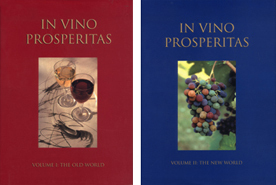
Commissioned by Credit Suisse to produce an impressive two volume set of wine books for over 3000 top VIP clients, I served as editor, writer and creative director on the project. Thanks to my trusty computer and email, I gathered a wide array of articles, quotes, book exerpts, hundreds of relevant illustrations, regional wine maps and photographs from the world's leading wine authorities. The books, In Vino Prosperitas, Volume I - Old World Wine and Volume II - New World Wine - tell their diverse stories about grapes, winemakers, wineries and wines from the words of such luminaries in the field as Philipine de Rothschild, Steven Spurrier, Hugh Johnson, Michael Broadbent, Jancis Robinson, Serena Sutcliffe, Robert Mondavi, Gina Gallo, Wolf Blass and many more.
It was a huge task, but a most educational and rewarding one, even without the glowing reviews.
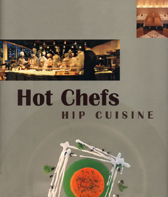
When asked if you eat to live or live to eat, how would you reply? A literal response, of course, would be the former.
But, quite frankly, we have come to expect – or even demand - a great deal more than sustenance from our daily bread. Today our food must go beyond just filling our bellies. Not only must the presentation be a vision to behold and the textures, aromas and flavors excite our palates and delight our taste buds, but our meal must be brought to the table on designer plates, and served by discreet and knowledgeable staff. A gargantuan order by any standards, but still not quite enough to fulfill our gastronomic requirements. Additionally, we cannot imagine dining in surroundings with insufficient architectural panache to compliment our impeccably prepared repast.
This metamorphosis of the basic cooking/dining ritual into dynamic cultural/entertainment/art form infused with great drama, has created a seemingly insurmountable task for the chef/restaurateur. It is rather like asking someone to write the screenplay, play the lead, oversee the scenery, direct and produce a film - all alone. Yet there mere mortals do exist who manage to achieve this miraculous culinary feat on a daily basis.
We call such kings of the kitchen HOT CHEFS. They have the imagination, talent and ability to bring out the best from every ingredient. They understand the complex blend of science and art necessary to continue to surprise the palate, without shocking it, to know the limits and parameters of imagination and creativity, without turning fusion into confusion. And they have the energy and stamina to make it happen.
While these miracle workers cannot be pinpointed by nationality, age or ethnic roots, they are joined by a common thread – an overriding, unquenchable passion for food.
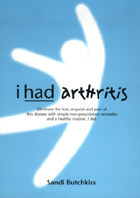
I HAD ARTHRITIS is the true story of what happened to me, how I felt and what I did about it, from the day I awoke to find I could not bend my right knee, to the shocking discovery I had become afflicted with the dreaded “A” word and finally to the day all symptoms were gone.
I didn’t have to write this book. Nobody asked me or paid me to do it. I wrote it for two main reasons. One, because there was nothing whatsoever of an encouraging nature available to me when I so badly needed a word of hope and oh, how an inspiring first person testimony of triumph over adversity would have cheered me and given me the incentive and courage to carry on. And, two, because so many people knew I could not walk at all after my second knee went the way of my first one, and when they saw me ride my bike or dance or trek up the hillside, they wondered aloud as to how the arthritis went away. Naturally I would have to tell them. And tell them I did, over and over again. My sister suggested it would be beneficial to fellow sufferers out there, and to me as well, if I could put it all down in book form. And so I did.
Finding that I had arthritis back in l995 was a tremendous shock to me. I doubt I would have been more surprised or less prepared to handle the situation if I had learned I was from another planet. Nobody in my family suffered from it nor had I ever even uttered the word. My Mom’s first joint on her little pinky on her left hand was slightly bent - probably due to a form of arthritis - but this miniscule deformity was practically impossible to detect with the naked eye. So, arthritis (in any of its l00 plus forms) was a foreign subject, something that happened to other people, older people, sedentary people. Certainly not to me.
In a panic, I tried everything. Acupuncturists, chiropractors, ointments, balms, massages and a lot more. Doctors with impressive framed diplomas on the wall failed me miserably and even knee specialists did more harm than good. Basically, I could find nothing and no one out there that was helpful. I had no choice but to become my own advisor and advocate.
As friends (and friends of friends) learned of my condition, pamphlets, articles and other printed materials poured in from the four corners of the globe and piled up next to my bed. I read every word. I joined arthritis clubs and societies and received their newsletters and magazines. Not a single one even mentioned or alluded to getting rid of arthritis. The uniform cry from all quarters was “learning how to cope” and coping was one thing I knew I did not want to do.
At that time the internet as we know it was really non-existent. In fact, it wasn’t until I was well over my arthritis that I was able to log onto the web. I was overwhelmed to discover hundreds of thousands of sites on the subject. If only I had this incredible source of material at my fingertips back in l995. But even so, it is a daunting task to weed through it all. There are endless repetitions and amazingly amongst all these thousands, just a handful of real success stories are out there in the ether. In my opinion there are a number of reasons for this dearth of recovery testimonials, which I will touch upon later.
The house where we lived was perched on a hill not reachable by car, but only by climbing up a total of 87 steps. Prior to that fateful day I could take these steps two at a time, but with my ailing knees it was now extremely difficult to negotiate and at other times, so painful it proved impossible. So rushing about to libraries and bookstores was often an unthinkable chore. Yet I forced myself to glean every bit of knowledge on the subject and sample every pill and potion on the market. If someone trying to be helpful suggested blue-lipped mussels because it was working for their aunt, I tried them. A pharmacist pal sent me shark cartilage capsules and I downed them like M & M’s. (Curiously, they ended up as one of the remedies that helped me a lot.) St. John’s wort? OK? Devil’s claw? Hand it over. Shark liver oil? Why not. When you are desperate for help, you listen to everyone.
Naturally, when going through this experimental trial and error exercise, you can’t ingest the welter of material all at once. How would you know which worked and which didn’t? You’ve got to give each new pill and capsule a fair go of at least three weeks to a month or more. So it’s a frustrating, time-consuming situation. Yet, I plodded on. What my particular formula was that did the trick for me is not really the issue. The fact that I didn’t give up and remain housebound, moaning and feeling sorry for myself is paramount. And the idea is to not just read about it, but to get out and do it.
Unfortunately, many arthritis sufferers think their disability can’t be cured but is a fact of life that must be endured. These poor folks will never get better. And I met quite a few of them. One famous gentlemen was walking in that way only the arthritis afflicted walk, yet when I said "..if I give you some first hand advice and tell you what should be done, will you do it?" He replied, without hesitation, "probably not." There you are. He was blunt and honest. But the average person will try this and that in a casual way. Perhaps not take enough of a remedy or stop too soon or not maintain a full regime. So of course it won’t work for them. But they are usually skeptical in the first place and that is a major strike against getting better.
My friend Bob, a head honcho in orthopedics at a leading American hospital said, “I’ve got two words for you. Keep moving.” And I never stopped since. Those two words were the single most important bit of advice I received from anyone.
So what else did I do? It’s a complete program that I put together for myself. And it’s all in the book. But I hesitate to enumerate the kinds or numbers of stretches, the type of walking, the particular non-prescription pills and herbs and homeopathic remedies that I took and still take. The crucial thing is not to copy me exactly, but to experiment for yourself. My formula could very well work for you, or maybe not. But I strongly believe there is an answer out there for everyone. You have just got to look for it.